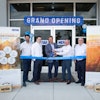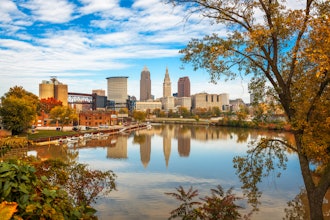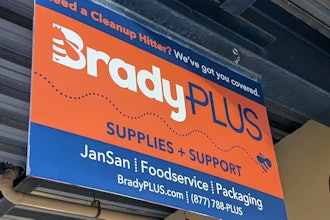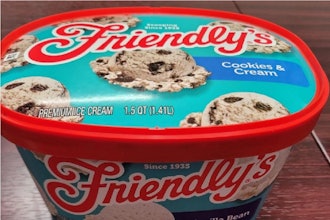Beauty is in the eye of the beholder — or is it the customer? In an industry that faces constant consumer scrutiny and fluctuating demands, packaging companies are continuously pushed to develop designs that catch customers’ interest and stand apart from other products on the shelf. Capitalizing on current trends and evolving with consumer taste can help emerging brands make a grand entrance into the market, or allow established brands to breathe new life into an existing product.
An array of cutting-edge designs for sophisticated packaging will be on display at PACK EXPO Las Vegas 2017 (Las Vegas Convention Center; Sept. 25-27), produced by PMMI, The Association for Packaging and Processing Technologies. Tom Egan, vice president of Industry Services at PMMI, offers his perspective on the successful characteristics of some of today’s designs and brands that have used premiumization to capture and retain customers over the years.
Q: What are the hallmarks of sophisticated and cutting-edge packaging design today?
Tom Egan: A consumer’s first impression of a product is heavily influenced by its packaging, and its level of sophistication is ultimately determined at the consumer level. Untold amounts of capital go into adapting equipment and production lines to meet new packaging styles and target the consumers who demand them. Manufacturers have to pay close attention to what their target customers identify as innovative, interesting or impressive. Companies regularly consider if changing the shape or overall look of a package will in fact appeal to customers seeking a different or perhaps more premium experience. Consumers may assign characteristics to a product simply because the design or graphics evoke those associations in their minds. For example, consider food packaging. A design is chosen to convey a brand and product message to consumers – perhaps that the product is healthier, more natural, more fun, or some other characteristic of the product and brand. The product packaging may not explicitly state this, but the materials and graphics help consumers draw that conclusion. In observance of this tendency, consumer-packaged goods companies regularly upgrade product packaging to reflect their customers’ changing definition of what is innovative, fresh, or perhaps fun.
Q: Premiumization is a big trend across the board, but are there specific sectors with more sophisticated packaging?
TE: Although some industries might focus more on achieving a high-end look than others, premiumization transcends market segments and applies to any product that strives for market differentiation. Often, the products that stand out are those that are presented in a bold, exciting format. When a traditional item is showcased in a novel, eye-catching way, the consumer may associate more value with the product, regardless of whether the content has actually changed. Furthermore, consumers are always interested in packages that offer added convenience. For example, it costs consumers more to purchase vegetable trays and pre-stacked kabobs than it does to purchase and slice the produce themselves, and yet the colorful, pre-arranged tray still sells. This is likely because the array of colors and shapes, combined with the time-saving factor, presents an all-over attractive option to consumers.
Q: What brands have taken premiumization to the next level, and how?
TE: Brands that prioritize sophisticated, premium packaging stretch across all market segments. In today’s fast-paced world, convenient and functional items are flying off the shelves. Customers may attach a premium value for items that promise a hassle-free experience and still uphold the original product. Tuna in a pouch, for example, which provides the consumer with very easy use plus the option for flavored offerings, presents a highly convenient option for consumers. This on-the-go packaging impacts packaging cost for the tuna, but many consumers prioritize time and ease-of-use over cost.
Similarly, Tide detergent released the Tide PODS, which provide the same formula in small, pre-portioned packs. These pocket-sized detergent packs save the time required for measuring the (admittedly small) amounts of liquid, eliminating product spillage and waste. In a similar vein, the metal lubricant WD-40 adapted its packaging to enable a better, easier, quicker use by the consumer. Originally, consumers had to attach a skinny straw, taped to the side of the can, to the nozzle in order to direct the lubricant to specific spots. Then, the can dispensing nozzle was redesigned to feature a nozzle with its own built-in straw, allowing consumers a precise product spray without the hassle of keeping track of the straw and attaching it to the nozzle. These few examples demonstrate a premium feel to the package and product by focusing on functionality to the highest extent, while still retaining original product formula and quality.
Q: How does product packaging become timeless and retain customer loyalty?
TE: Picture a bottle of Coca-Cola. The image that comes to mind is the same red-and-white logo and hourglass bottle that older generations remember, and future generations are likely to encounter. This is because some packaging is iconic. The Coke bottle design is an easy association by the consumer to the brand and its qualities. Packaging that achieves this unique level of association to consumers across the globe remains prominent in the marketplace over years—even decades. However, the key to keeping brands relevant and maintaining customer loyalty as consumer taste evolves is making conscious upgrades to packaging to ensure the product is innovative and relevant to customers’ changing needs. The original glass Coke bottle continues. Additionally, Coca-Cola carried out several successful campaigns that captured current trends in pop culture. The brand implemented initiatives like featuring popular song lyrics on bottles and cans and developed the “Share a Coke” campaign, which offered a chance for the consumer to select their “own name” bottle from the shelf. Successful brands strike the right balance between consistent packaging styles and making small tweaks that enhance consumer convenience.
Brands seeking industry insight for advancements in sophisticated packaging will find solutions at PACK EXPO Las Vegas 2017, which offers a premier opportunity for professionals in the packaging world to view innovative designs and trend-focused technologies. PACK EXPO Las Vegas will also feature The Showcase of Packaging Innovations, sponsored by The Dow Chemical Company, highlighting top packaging designs from global companies. Co-located with the PMMI-produced Healthcare Packaging EXPO, PACK EXPO Las Vegas will feature more than 2,000 exhibiting companies and 30,000 attendees, including 5,000 international visitors from more than 125 countries. Register for PACK EXPO Las Vegas here.






















